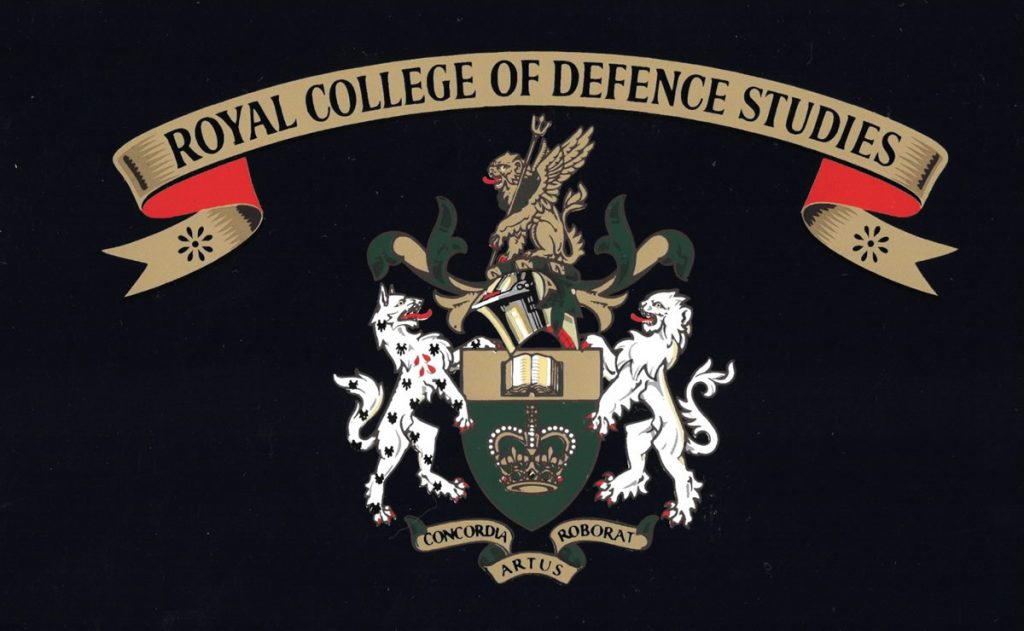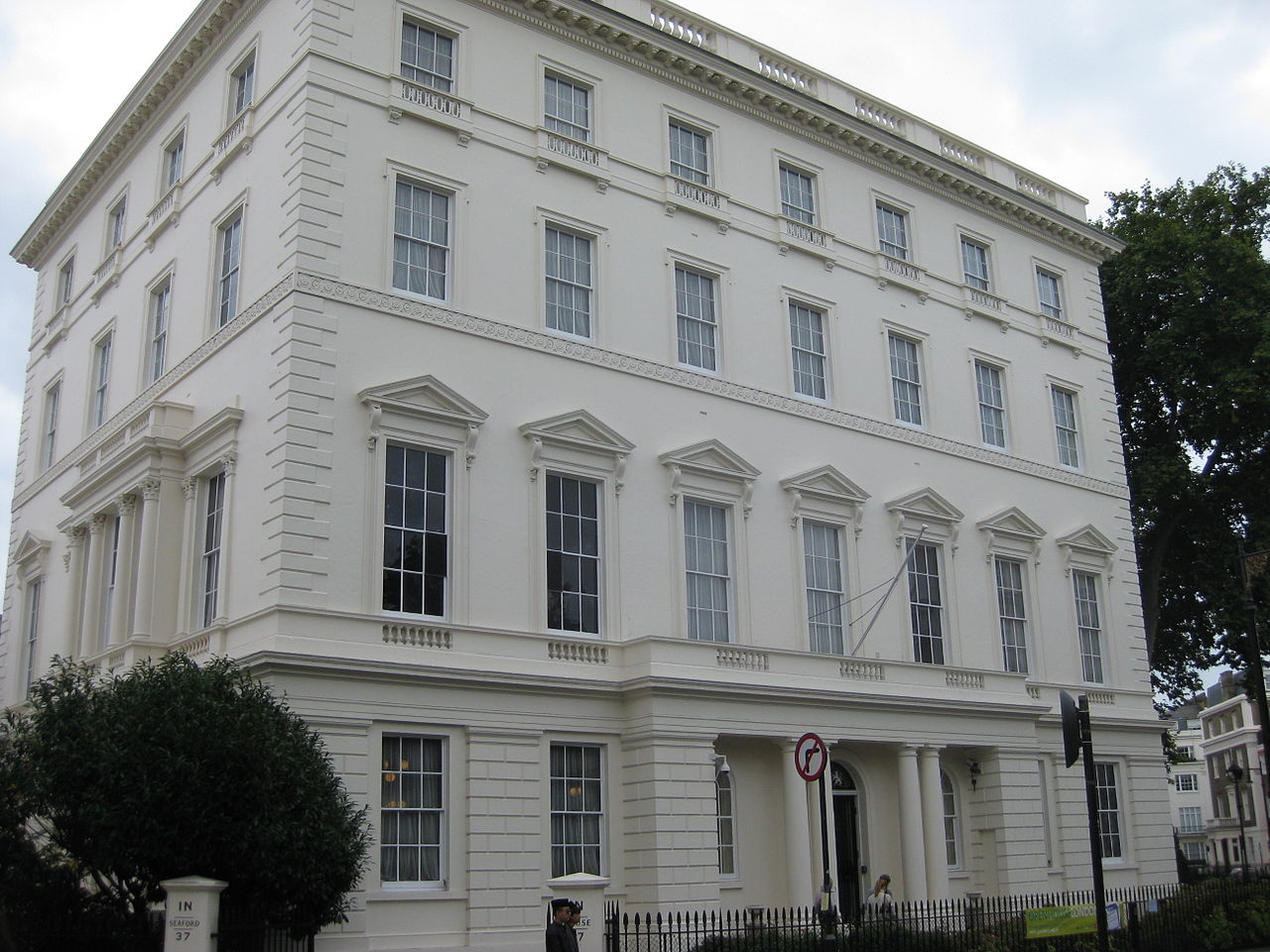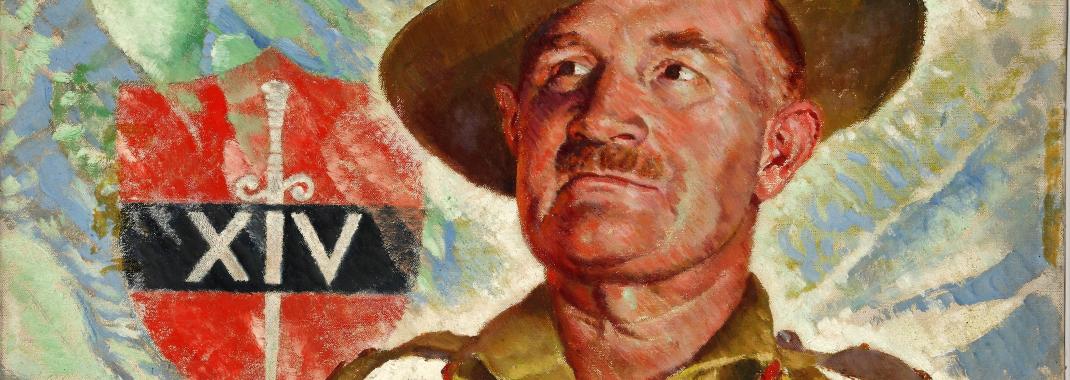Finest Hour 174
Winston Churchill and the Imperial Defence College

December 18, 2016
Finest Hour 174, Autumn 2016
Page 18
By Andrew Stewart
Andrew Stewart is Reader in Conflict and Diplomacy in the Defence Studies Department of King’s College London and the Director of Academic Studies (KCL) at the Royal College of Defence Studies. The views, analysis, and opinions expressed here are his own.
For Britain and its Empire, a period of intense reflection and debate followed the conclusion of the bloodbath that had been the First World War. One of the main themes discussed was how in the event of another war, military resources and forces that were scattered around the world could be better prepared, co-ordinated, managed, and led. This was not new. Similar discussions had taken place since at least 1890, when the Hartington Commission had proposed the establishment of a naval and military council. In 1904 Arthur Balfour took over the chairmanship of a Cabinet Defence Committee, and, with the prime minister in the chair, it was renamed the Committee of Imperial Defence (CID) and seen “as an attempt to create an Imperial General Staff on a temporary basis.”1 It had its own dedicated secretariat, but, with no executive powers, its ability to function effectively was seriously hampered. Following the outbreak of war in 1914, the CID ceased to meet. It was more than four years later, in November 1919, before it re-convened, by which point it was clear that there had been significant changes not just to the international system but also to the imperial network which held such an important role within it.

2024 International Churchill Conference
Questions were now raised about whether the CID was the most effective means for the co-ordination of imperial defence. Aside from the tremendous loss of life suffered by all of the territories that had fought for King George V, the conflict had left Britain’s finances in a parlous state. In the summer of 1921 David Lloyd George had established a special committee to review expenditure chaired by Sir Eric Geddes, a businessman who had played a prominent wartime role in helping organise military transportation. The interim report was presented to the prime minister in December and within its recommendations were proposals for major cuts to the military. Although he no longer had any direct involvement in the War Office or Air Ministry, having moved in November 1921 to take control of the Colonial Office, amongst the report’s most vocal critics was Winston Churchill.
In terms of security or military matters “his manner was forward and he argued from a more formidable knowledge than most ministers,” and he remained a leading voice on security and defence matters.2 As for the prime minister, who looked to reduce the military to a level that would free up the necessary resources for his preferred social projects, he appeared more sanguine about Geddes’ conclusions. He therefore established another committee—the succinctly titled “Cabinet Committee appointed to examine part 1 of the first interim report of the Committee on National Expenditure”—to provide a more detailed examination of just how far expenditure could be reduced without causing danger to national security. Churchill was appointed to chair the committee, which included Lord Birkenhead, Edwin Montagu, and Stanley Baldwin. With his stature and experience, the former Secretary of State for War was the obvious choice for the role, and during January and February 1922 these men reviewed the proposals.
 Seaford House, home to the College of Defence Studies in LondonTwo years before, Churchill had also been the first to propose that a Joint Staff College be established, arguing that it was “essential that a General should think, not only in terms of soldiers, but also in terms of ships and air forces, and vice versa.”3 Although he had previously opposed the idea that foreign policy-making should be a collective endeavour, he did also possess an incisive knowledge of imperial affairs. For some of his colleagues, however, he held distinctly dated views about the British Empire; according to one senior colleague, Churchill’s standard diplomatic approach had been to make sure that “the Colonial PMs should be given a good time and sent away well banqueted, but empty-handed.”4
Seaford House, home to the College of Defence Studies in LondonTwo years before, Churchill had also been the first to propose that a Joint Staff College be established, arguing that it was “essential that a General should think, not only in terms of soldiers, but also in terms of ships and air forces, and vice versa.”3 Although he had previously opposed the idea that foreign policy-making should be a collective endeavour, he did also possess an incisive knowledge of imperial affairs. For some of his colleagues, however, he held distinctly dated views about the British Empire; according to one senior colleague, Churchill’s standard diplomatic approach had been to make sure that “the Colonial PMs should be given a good time and sent away well banqueted, but empty-handed.”4
A Dazzling Super-Minister
Having held several meetings to discuss the Geddes report, on 21 March Churchill explained to the House of Commons his committee’s findings and confirmed that, whilst some of the original recommendations had been rejected (notably the idea that the Royal Air Force should be broken up and its aircraft split between the other two Services), it had been accepted that military reductions were needed. He also revealed that it was now clear to him at this stage that no single ministry—a Ministry of Defence—could be established, despite his previously having offered support for the idea of a co-ordinating body. This he put down to “the particular prejudices” of the three services, which remained to be “shaken down.” He went on to add that there was the issue of finding a person to head it who would have to be “such a dazzling super-Minister that he would dwarf all the rest of his colleagues.”5 Churchill concluded by proposing that the most sensible approach was instead to create “a body of officers trained to look at the problem of war as a whole and not merely from a land, or sea, or air point of view”—what he described as “the beginnings of a common brain for the three Services.” To do this, the establishment of two new groups was announced, both of which would consider the issue further. One of these, the “Sub-Committee of the Committee of Imperial Defence to consider institution of Joint Staff College,” was intended to examine specifically the potential implications for military education, and in March Churchill was asked by Sir Maurice Hankey, the already long-serving secretary of the CID, for his opinions as to who should sit on it alongside him.6
In September, the Sub-Committee’s composition was confirmed, with Churchill once again in the chair, along with three representatives selected from each of the Service Ministries. Before it could be convened for its first meeting, however, the November 1922 General Election was held, and Churchill’s unexpected loss of his Dundee seat prevented the originally-nominated chairman from taking up his appointment. Instead the role went to Major The Hon. E. F. L. Wood MP, President of the Board of Education and later 1st Earl of Halifax, and on 20 February 1923 its first formal session took place. By this point Churchill had withdrawn to the South of France, where he spent the next six months working on his five-volume epic The World Crisis.
Despite his absence, the Sub-Committee entirely accepted Churchill’s arguments, although without offering any official recognition of his previous role or influence. There was, however, only indifferent political and military support and, despite the Wood Report being submitted to the CID in December 1923 where it was accepted in principle, it would take another three years for it to advance any further. Churchill, by then restored to a position of influence following his appointment as the Chancellor of Exchequer, once again offered his support, and, with the college’s establishment finally agreed, in January 1927 the first course commenced.
Churchill’s Contribution
Whilst it was not always acknowledged at the time, the central role Churchill had played in the creation of the Imperial Defence College became much more widely recognised after the Second World War. For the college’s re-opening in April 1946, with the great British general Sir William Slim as its first post-war commandant, an information sheet was prepared as part of a press conference organised to publicise the event. In an early draft of this document, it was suggested that it had been Hankey who had, in fact, been the driving force behind the idea. General Sir Leslie Hollis, who had worked alongside Churchill for much of the war and was at this point still Assistant Secretary of the Chiefs of Staff Committee, reviewed the minute and intervened to point out that it had in fact been the wartime prime minister who was “the moving spirit in the idea of an Imperial Defence College.”7 From this point on it became commonly accepted wisdom that the two were irrevocably connected, and, as one of those selected to attend the college the following year later wrote, it was understood that it was “one of Winston Churchill’s inspired creations.”8
The great tragedy for the college is that Churchill was never actually able to demonstrate his tremendous intellectual and oratorical skills in front of its Members (the term used to refer to those who attend the course). He was due to have given a lecture in 1936, the invitation highlighting that his absence from the names of those who had spoken previously to the college was “a very notable omission.”9 It was therefore proposed that he should come and speak on some aspect of the “Higher Direction of War,” but no gap could be found in his busy diary, and he was forced to decline.10 Two years later he was approached once again, and the invitation was accepted. Scheduled to speak in October 1938 following the Munich crisis, Churchill wrote to the then commandant Air Chief Marshal Sir Arthur Longmore “that he was so distressed by the change in the situation that he hadn’t the heart to address himself to the task to which he had been invited.”11 No indication can be found of his finding an alternate date to speak before the war began, and there is no evidence of his ever having spoken after the war at Seaford House, the home of the college since 1946; the only established physical link is that during his second term in office as prime minister what is today the commandant’s apartment was used by his chauffeur.
 Sir William Slim, First Post-war CommandantCurrently some fifty nations each year send high-ranking military officers and civil servants who join representatives from Britain’s political system and the country’s commercial sector in attending the senior college of the UK’s Defence Academy. The modern-day Members who attend the Royal College of Defence Studies, the contemporary name for Churchill’s creation, are part of an ever-expanding international community which owes its existence to the foresight shown by Britain’s leading politician and statesman. Today there are many visual references to the great man, which can be seen throughout the college buildings. The student body are unlikely, however, to notice the crest and armorial bearings, which also highlight Churchill’s great contribution. Known affectionately as the “Beast,” within its heraldic design there is reference to the Royal Navy, the British Army, the Royal Air Force, the Foreign and Commonwealth Office, and the Royal Crown. A final element takes the form of two supporters, a wolf from Hankey’s coat of arms and, on the other side, Churchill’s lion. This offers an enduring recognition of the role both played in the college’s establishment.
Sir William Slim, First Post-war CommandantCurrently some fifty nations each year send high-ranking military officers and civil servants who join representatives from Britain’s political system and the country’s commercial sector in attending the senior college of the UK’s Defence Academy. The modern-day Members who attend the Royal College of Defence Studies, the contemporary name for Churchill’s creation, are part of an ever-expanding international community which owes its existence to the foresight shown by Britain’s leading politician and statesman. Today there are many visual references to the great man, which can be seen throughout the college buildings. The student body are unlikely, however, to notice the crest and armorial bearings, which also highlight Churchill’s great contribution. Known affectionately as the “Beast,” within its heraldic design there is reference to the Royal Navy, the British Army, the Royal Air Force, the Foreign and Commonwealth Office, and the Royal Crown. A final element takes the form of two supporters, a wolf from Hankey’s coat of arms and, on the other side, Churchill’s lion. This offers an enduring recognition of the role both played in the college’s establishment.
In terms of the many important political achievements he accomplished during his long career, this lesser-known act, initiated when Churchill was Colonial Secretary, would go on to have a massive impact both for Britain and what was to become the Commonwealth of Nations. His idea of creating what he termed a “common brain” meant that, when the Second World War began, there was already established a network of senior military officers and government officials who could work together to help safeguard the British Empire’s future. As the college celebrates its ninetieth anniversary, his legacy remains stronger than ever.
Endnotes
1. Colonel J. F. C. Fuller, Imperial Defence 1588–1914 (London: Sifton Praed and Co. Ltd., 1926), pp. 56–58.
2. Robin Higham, Armed Forces in Peacetime: Britain, 1918– 1940—A Case Study (London: G. T. Foulis and Col. Ltd., 1962), p. 246.
3. Committee of Imperial Defence Meeting, 29 June 1920, cited in “Note,” 3 May 1946, CAB 121/257, The National Archives, Kew (hereafter TNA).
4. Leo Amery, My Political Life, Volume I, England Before the Storm (London: Hutchinson, 1953), p. 196.
5. “Royal Air Force (Control),” House of Commons Debate, 21 March 1922, Hansard (Vol. 152, cc 342–94).
6. “Report of the Sub-Committee,” 11 May 1923, CAB 16/45, TNA. The Salisbury Sub-Committee of the Committee of Imperial Defence met throughout the first half of 1923 to consider more specifically the question of a Ministry of Defence and concluded that this was not advisable. The suggestion put forward instead was that the three Chiefs of Staff should be formed into a standing Sub-Committee, which became centrally involved in how the IDC was to be managed.
7. Hollis to Major-General Norman Jolley (Secretary, IDC), 3 May 1946, CAB 121/257, TNA.
8. Major-General Sir John Nelson, Always a Grenadier (unpublished memoir), p. 109, Liddell Hart Centre for Military Archives, King’s College London.
9. Colonel Alan Dawnay to Winston Churchill, 5 October 1936, CHAR 2/259, Churchill Archives Centre, Cambridge.
10. Ibid., Churchill to Dawnay, 8 October 1936.
11. Air Chief Marshal Sir Arthur Longmore, From Sea to Sky, 1910–1945 (London: Geoffrey Bles, 1946), p. 189.
Subscribe
WANT MORE?
Get the Churchill Bulletin delivered to your inbox once a month.


